Congratulations on your new drone! You couldn’t wait until spring to fly your new toy, even if it meant braving the freezing cold. Flying drones in freezing weather may present some challenges, but don’t let the cold weather dampen your spirits – with the right knowledge and preparation, you can still get some amazing footage without turning into a human popsicle.
In this article, we’ll cover the key considerations for Flying Drones in Freezing Weather, including the differences between consumer and commercial drones and how to prepare for a successful flight. These tips will help you navigate the challenges of flying in cold weather, whether you’re just starting out or have been flying for a while, and capture some amazing shots.
Consumer vs Commercial Drones
As a professional in the drone industry, it’s important to remember that drones are tools, not toys. When it comes to flying in cold weather, the choice between a consumer or commercial drone can significantly impact the success of the flight. While consumer drones may be more affordable and accessible, they may not be as reliable or durable in cold temperatures. Commercial drones, on the other hand, are designed to be more rugged and reliable in a variety of conditions, making them a better choice for professionals who need to fly in freezing weather.
To ensure a safe and successful flight in cold weather, it’s essential for professionals to consider the type of drone and take the necessary precautions.
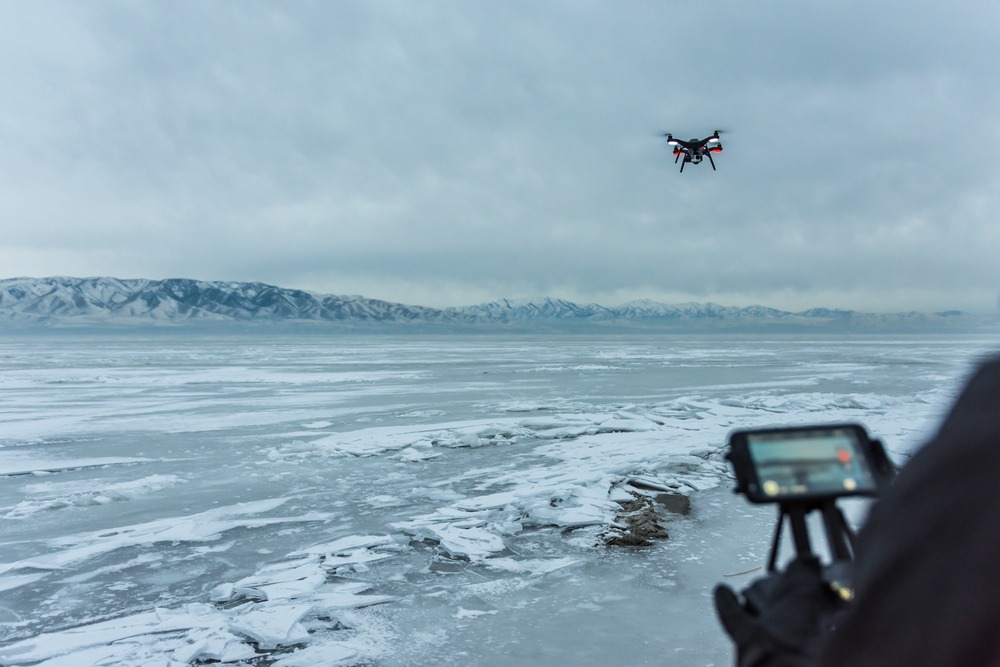
Pre-Flight Warm Up
It’s important to give your drone a warm-up before takeoff in cold weather to ensure everything is working properly. To do this, hover the drone about 10 feet (3.05 m) in the air for about a minute. This allows the battery to reach an optimal flying temperature of around 60-68°F (15.56-20°C). Warm-up flights also give you the opportunity to see how the drone is coping in the current conditions and make any necessary adjustments.
To make the most of your winter flying session, create a pre-flight checklist with items like charged batteries and appropriate camera settings. This will help you stay organized and make the most of your time. Overall, warming up your drone and planning your flight can help ensure a successful and enjoyable winter flying experience.
Battery Life
It’s essential to understand the impact of cold weather on your drone’s battery. Most commercial drones use Lithium Polymer (LiPo) batteries, which can be affected by extreme temperatures. In cold weather, these batteries may drain faster and have reduced capacity. To extend your drone’s battery life, use a heater or insulation stickers to keep your batteries and spares warm. Always fly with fully charged batteries, and monitor battery status during flight. Cold weather can affect your drone’s performance, so be prepared and follow these precautions to ensure a safe and successful flight.
Flight and Visibility ( Environment )
To ensure a safe and successful flight in cold weather, consider the flight and visibility conditions. Inclement weather such as thunderstorms, snowstorms, wind shear, icing, and fog can create hazardous conditions for drone pilots. The FAA’s Part 107 rules require maintaining a minimum weather visibility of three miles from the control station and keeping the drone in your visual line of sight. Check the weather before your planned flight and reschedule if necessary. Low visibility due to fog or low clouds can make it difficult to navigate and see your drone, increasing the risk of a crash or loss. To fly safely in cold weather, check the forecast for visibility, avoid flying in moisture-rich conditions like fog or close to clouds, and plan your entire flight, including location and duration. Make a pre-flight checklist to ensure a safe and successful flight.
Cold Weather Gears
In addition to preparing your drone for cold weather flights, it’s also important to dress appropriately as the operator.
This means wearing touchscreen gloves to keep your fingers nimble while still allowing you to use your controller and mobile device, as well as sungoggles to protect your eyes from the glare of the snow. It’s also a good idea to dress in warm layers, as the cold temperatures can be harsh on the body, and you don’t want to cut your flight short due to being too cold.
By taking the time to dress appropriately for the weather, you can stay comfortable and focused on flying your drone safely in the cold.
Camera Settings ( Exposure and White Balance )
Capturing beautiful winter photos with your drone requires adjusting the exposure and white balance settings on your camera. For best results, try manually setting your exposure to slightly over-expose the image by 0.3-0.7 stop. Adjusting the white balance to a value of, 6500k is also recommended for photographing snow. If you’re not confident in adjusting these settings, consider using a neutral density (ND) filter to reduce the amount of light that passes through the lens. Keep in mind that it’s important to keep your lens clear by flying backwards in light rain or snow, and remember to bring a microfiber cloth to wipe away any moisture or dirt. With the right camera settings and a bit of careful planning, you can capture stunning winter photos with your drone.
Clear the Takeoff (Landing Area)
Before taking off or landing your drone, it’s important to ensure that the area is clear of any obstacles or debris. Winter weather, with its snow and ice, can make it more difficult to see potential hazards. To ensure a safe flight, inspect the area and clear any snow or ice, and keep a safe distance from objects that may be difficult to see, such as power lines or trees. You may also want to consider using a drone landing pad, which provides a dry and safe place to land and protect against moisture exposure. These pads are inexpensive and can be easily purchased or made from materials like cardboard or plastic. Keep in mind that landing in the snow or wet grass can cause damage to your drone, so it’s best to avoid these areas.
Know Your Drone’s Capabilities and Limitations
It is essential to know the capabilities of your drone, especially in the winter, when the weather can be unpredictable. The maximum wind speed and operating temperature range for your drone can be found in the operator manual, or by checking the table below for popular DJI models. Exceeding these limits can put your drone and those around it at risk.
Additionally, the IP rating of your drone, which measures its resistance to dust and water, should also be considered before flying in adverse weather conditions. By understanding the limits of your drone, you can help ensure a safe and successful flight.
| Drone | Max Wind Sped (m/s) | Operating Temperature (°C) | IP Rating |
| M300 RTK | 15 | -20 to 50 | IP45 |
| M200 Series V2 | 12 | -20 to 50 | IP43 |
| Inspire 2 | 10 | -20 to 40 | N/A |
| Mini 2 | 8.5 to 10.5 | 0 to 40 | N/A |
| Mavic Mini | 8 | 0 to 40 | N/A |
| Mavic 3 | 12 | -10 to 40 | N/A |
| Air 2S | 10.7 | 0 to 40 | N/A |
| Air 2 | 8.5 to 10.5 | -10 to 40 | N/A |
| P4 RTK | 10 | 0 to 40 | N/A |
| P4 Pro V2.0 | 10 | 0 to 40 | N/A |
| Mavic 2 Series (inc Enterprise Series) | 8 to 10.5 | -10 to 40 | N/A |
| DJI FPV | 10.8 to 13.6 | -10 to 40 | N/A |
Get to know more about THE BEST ENTRY LEVEL DRONE (FOR FPV RACING OR FREESTYLE) 2023
Challenges of Flying Drones in Hard Weathers
Flying a Drone in the Snow
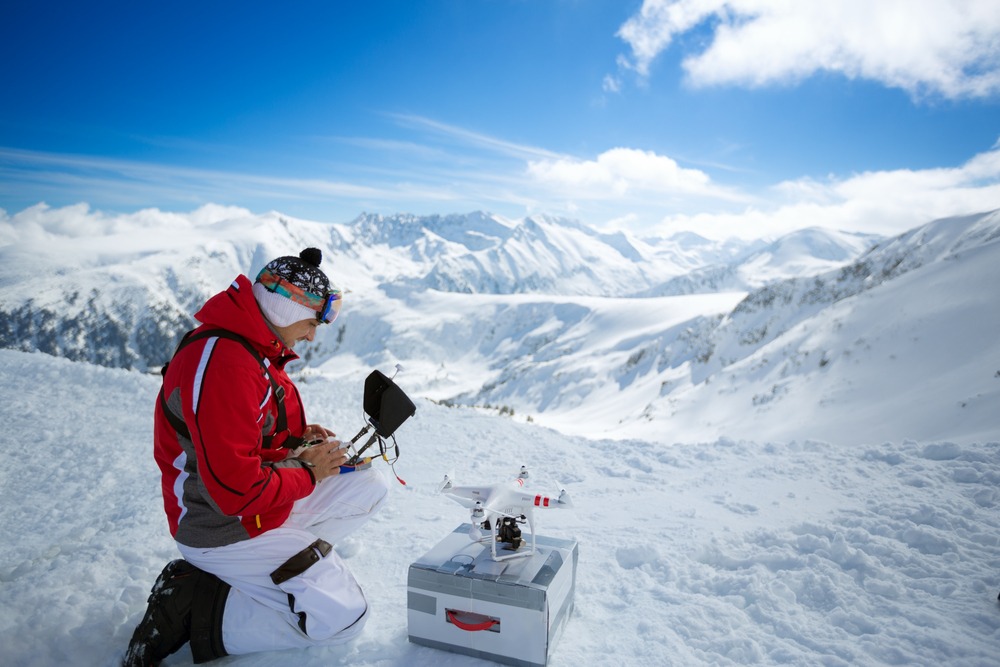
Snow can present a number of challenges when it comes to flying a drone, including:
- Risk of water damage: While snow is not as damaging as rain when it comes to moisture exposure, it is still a good idea to avoid flying the drone in snowfall to minimize the risk of water damage.
- Impact on the camera: Snow can cause confusion for the drone camera, particularly with auto focus and auto exposure, due to its bright and reflective nature. Snow may also cover the lens or add extra weight to the drone if it gathers on the hull.
- Limited visibility: Snowy conditions may limit visibility, which is a legal requirement for flying a drone. It is important to ensure that you can maintain a visible line of sight when flying in the snow.
To minimize these risks, it is advisable to avoid flying in actual snowfall and to wait for the skies to clear before taking flight. It is also a good idea to be mindful of the potential impact on the camera and to be cautious when landing in the snow to prevent damage to the drone.
Flying a Drone in the Rain

Rain can be a challenging environment for drones due to the risk of water damage and interference with electronics. Some specific challenges include:
- Exposing the drone to moisture: Rain can soak into the internal components of a drone, causing damage to sensitive electronics like lithium-ion batteries and wiring. This can lead to short-circuits, corrosion, and other problems that may not be immediately apparent.
- Cold temperatures: In cold weather, moisture may freeze and cause even more extensive damage to the drone.
- Signal interference: If rain reaches the drone’s receiver, it may cause signal interference that makes it difficult or impossible to control the drone, potentially leading to a crash or loss of signal.
To minimize these risks, it is best to avoid flying a drone in the rain whenever possible. If you do get caught in the rain while flying, return the drone to home or land it as quickly as possible and dry it off to prevent further damage. If you’re insisting on flying your drone in wet conditions, check out our article on the top 5 best waterproof FPV drones in 2023 for all budgets.
Flying a Drone in Windy Weather
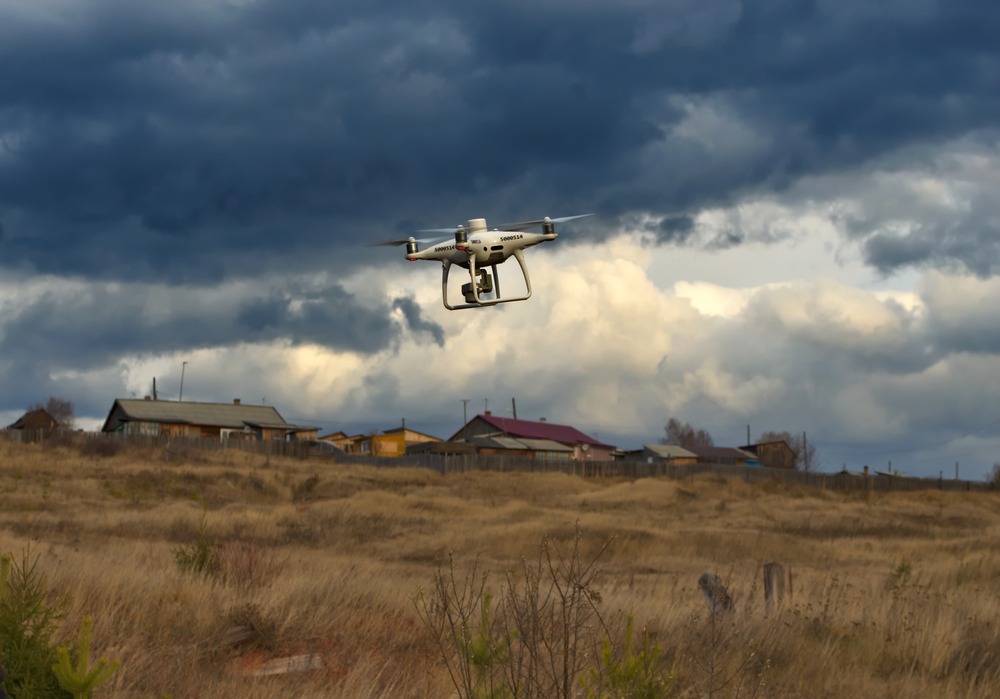
Windy conditions can present a number of challenges when it comes to flying a drone. Some specific challenges include:
- Difficulty controlling the drone: High winds can make it difficult to maintain control of the drone and to keep it stable. This can increase the risk of a crash and may require more focus and quick reactions to accommodate for the changing wind conditions.
- Impact on battery life: Windy conditions can also drain the drone’s battery faster, particularly if it is also very cold. It is a good idea to bring at least one spare battery if you plan to be out flying for a while.
- Risk of crashing: When flying in windy conditions, it is advisable to choose a wide-open space and to avoid flying too high up where the winds are less predictable. Flying near buildings, trees, power lines, or other large objects can increase the risk of a crash.
To minimize these risks, it is important to practice flying in windy conditions and to be mindful of the impact on battery life and control.
Coating Your FPV Drone: A Simple and Effective Way to Extend Its Lifespan
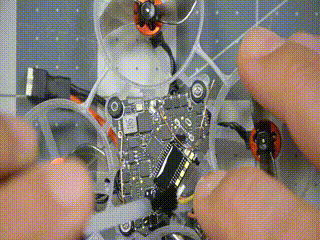
One way to protect your drone from the challenges of flying in difficult weather conditions is to apply a coating to it.
There are several types of coatings available to choose from, including spray-on coatings and wrap-around coatings, which can help to protect your drone from moisture and wind.
Applying a coating to your drone can extend the lifespan of your drone and improve its performance in adverse weather.
When choosing a coating for your drone, it is important to consider the type of weather you will be flying in and the specific protection needs of your drone.
For example, if you plan on flying your drone in the rain or in humid conditions, you may need to pick a coating that is specifically designed to protect against moisture. On the other hand, if you plan on flying your drone in windy conditions, you may want to choose a coating that is designed to withstand strong gusts of wind.
Regardless of the type of coating you choose, be sure to follow the manufacturer’s instructions carefully and take the time to apply the coating evenly and thoroughly to ensure the best possible protection for your drone.
Final Thought
In conclusion, flying a drone in cold weather can be challenging, but it’s possible to get successful footage with the right precautions and strategies. Choose the appropriate type of drone for the conditions, such as a commercial drone for professional use, and warm up the drone before takeoff to ensure optimal performance. Consider the impact of cold weather on the battery and take steps to extend its life. Be aware of the flight and visibility conditions and follow FAA guidelines. With proper preparation and care, you can fly a drone safely and successfully in cold weather.
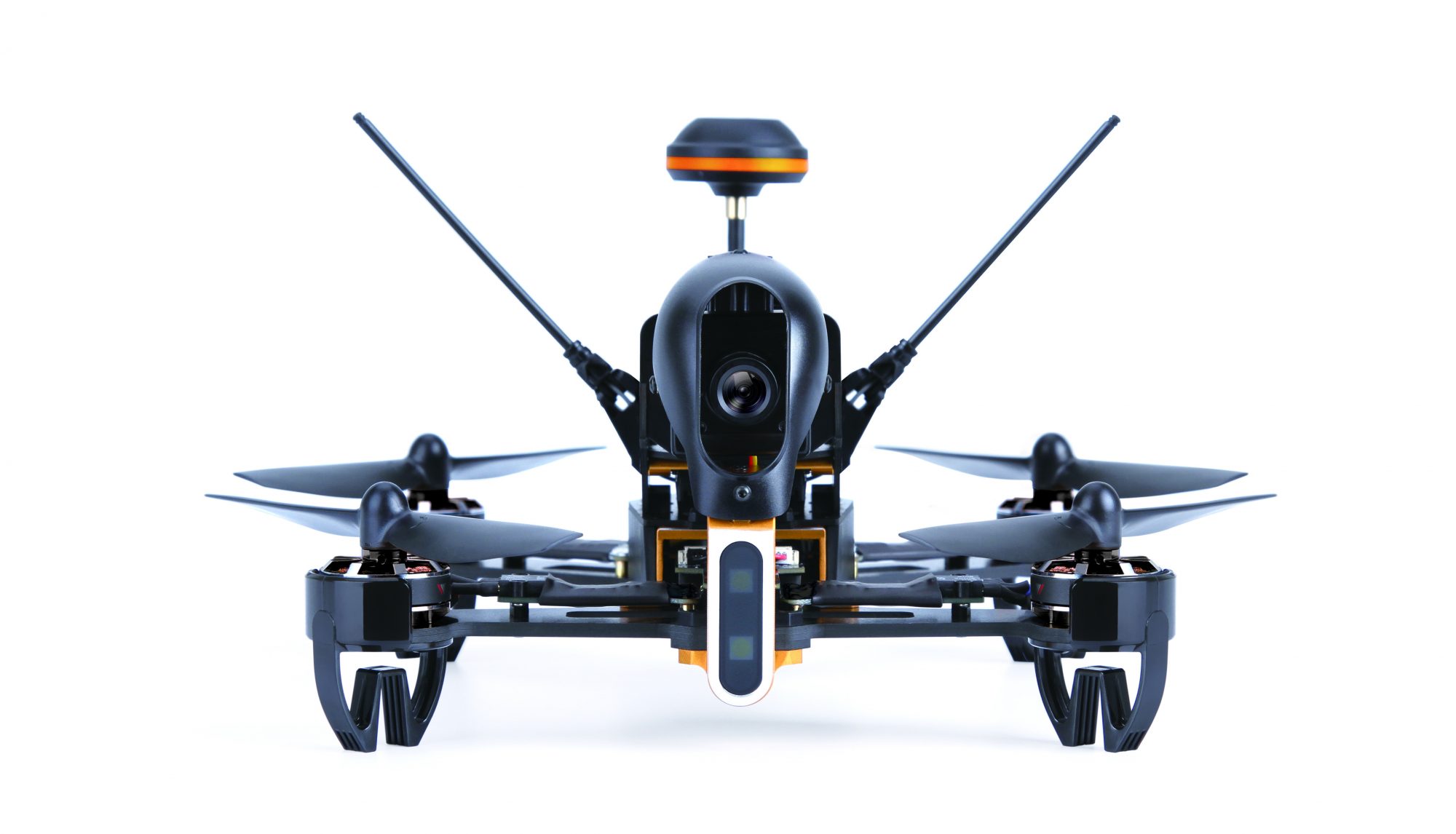
One Reply to “Flying Drones in Freezing Weather: tips and precautions.”